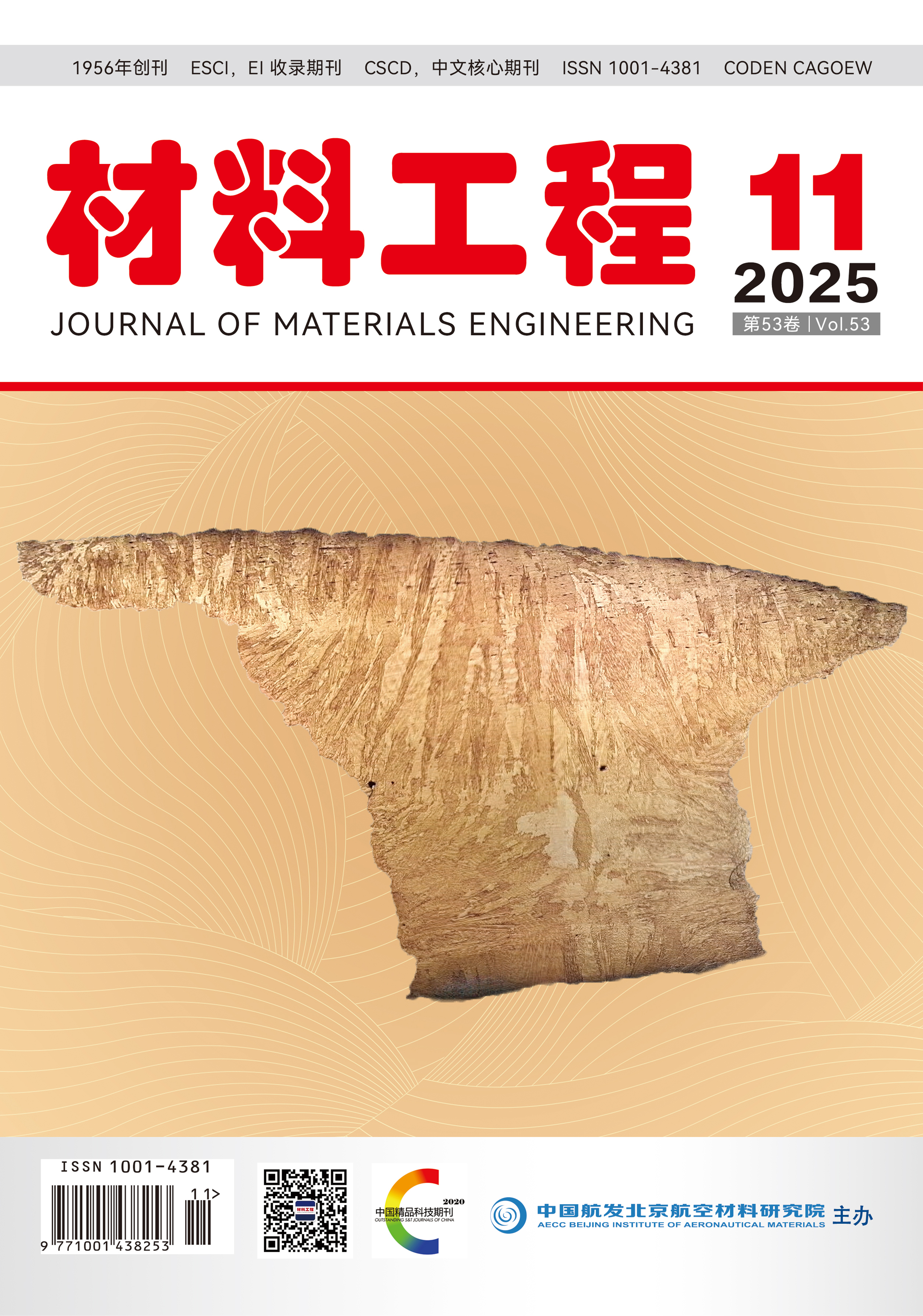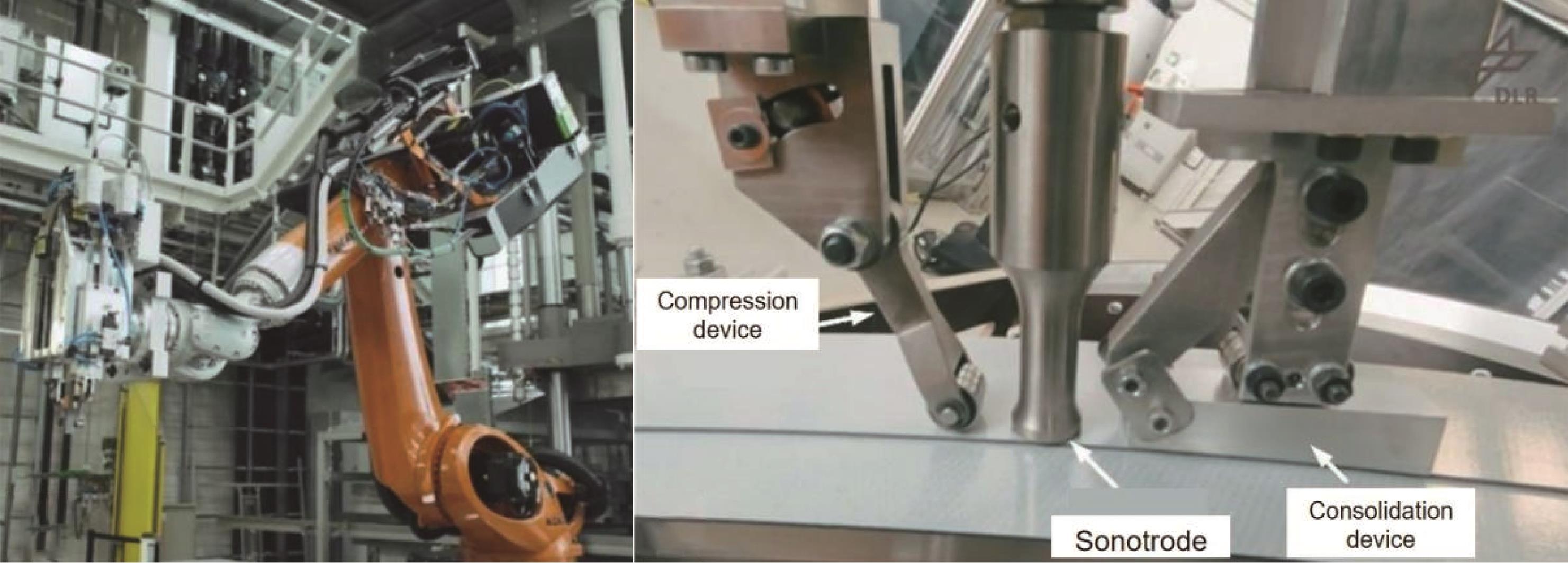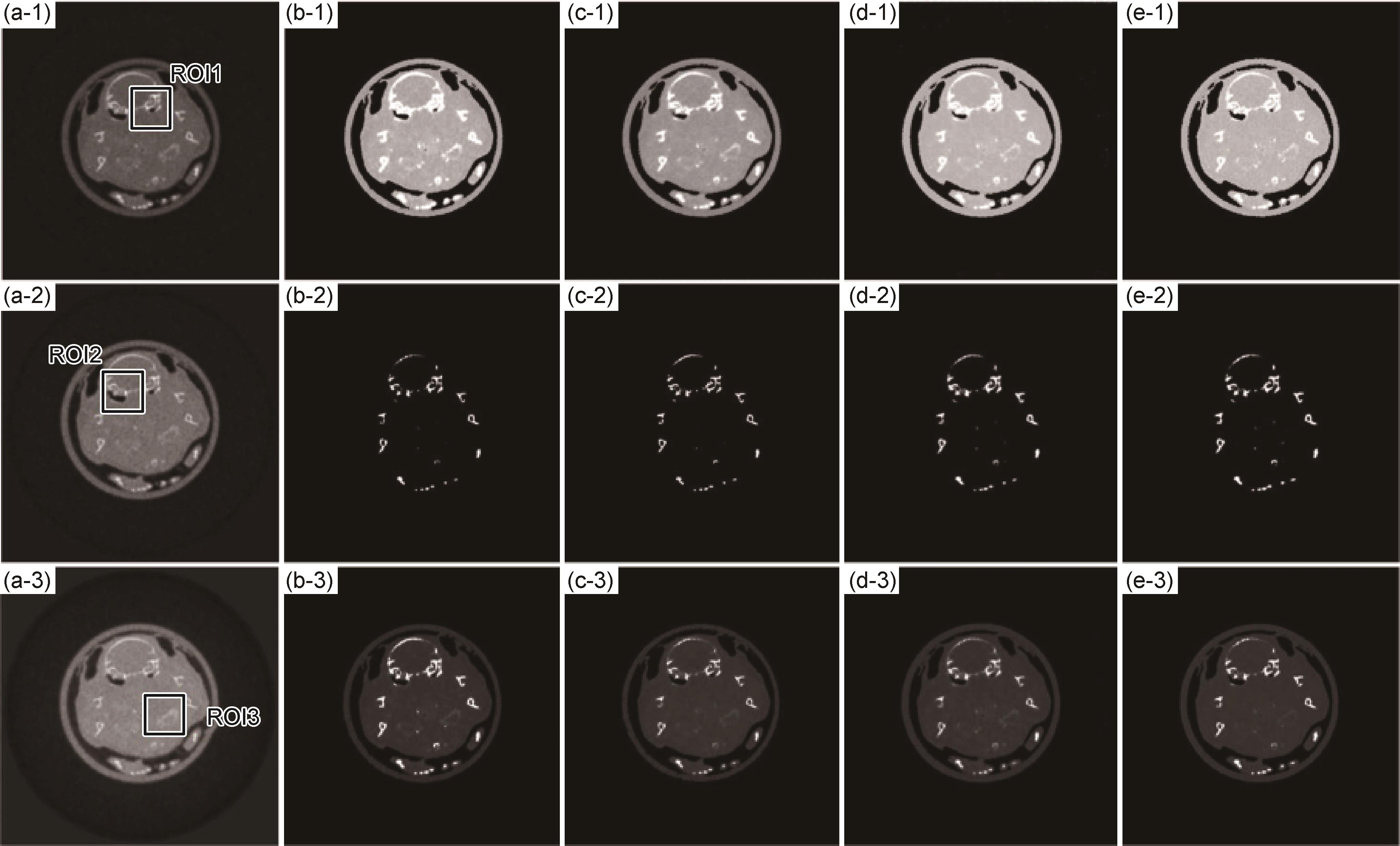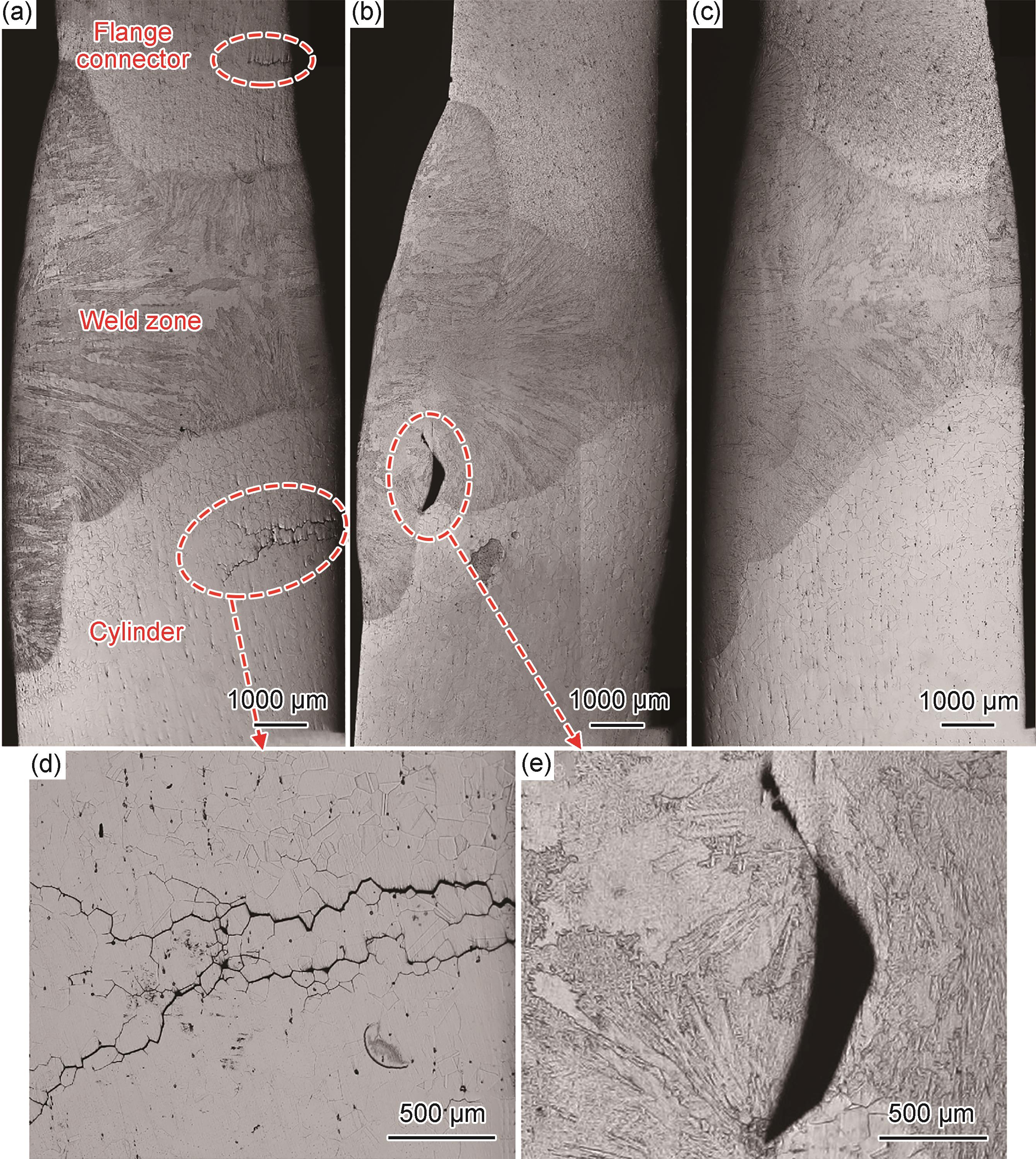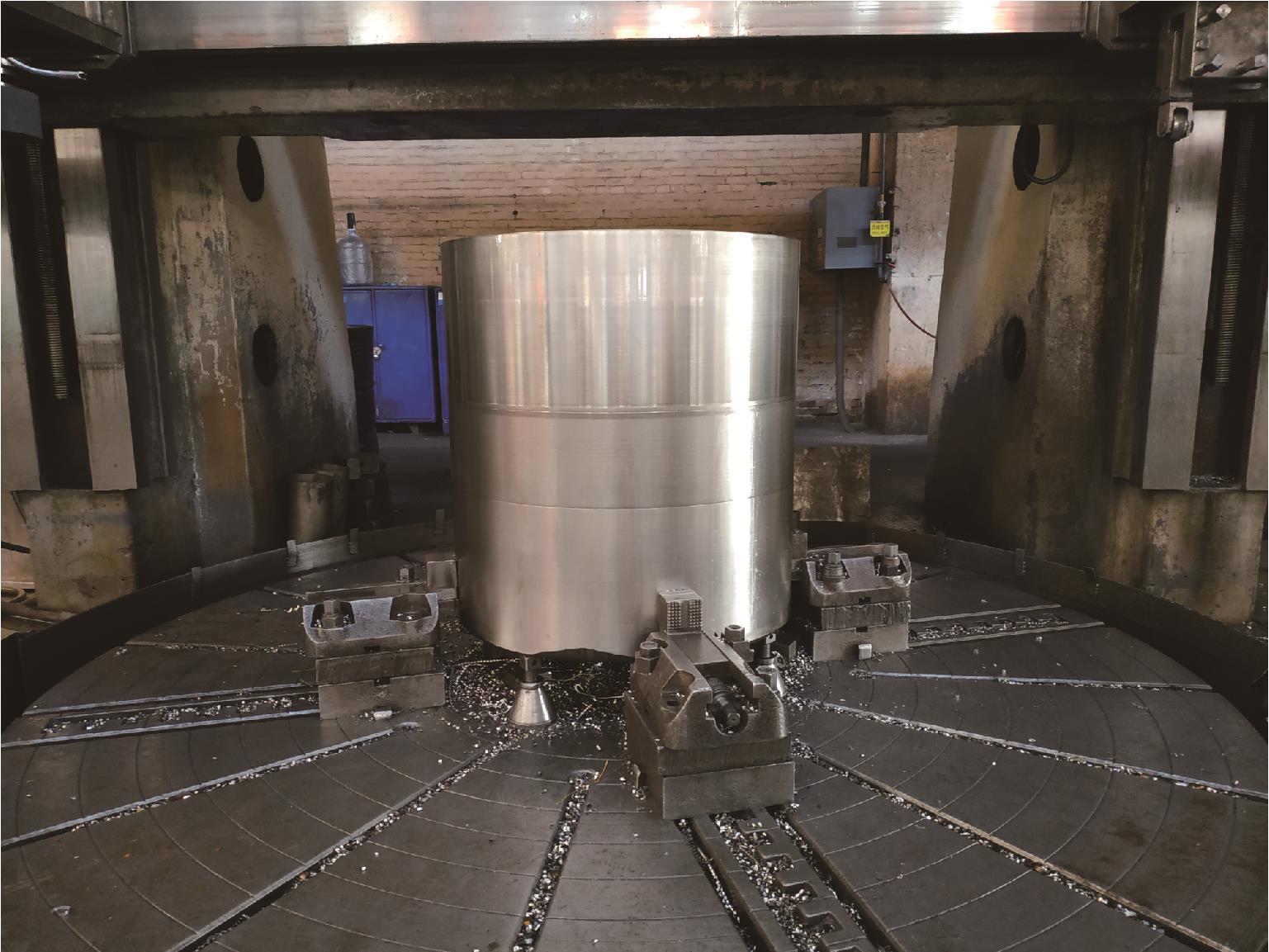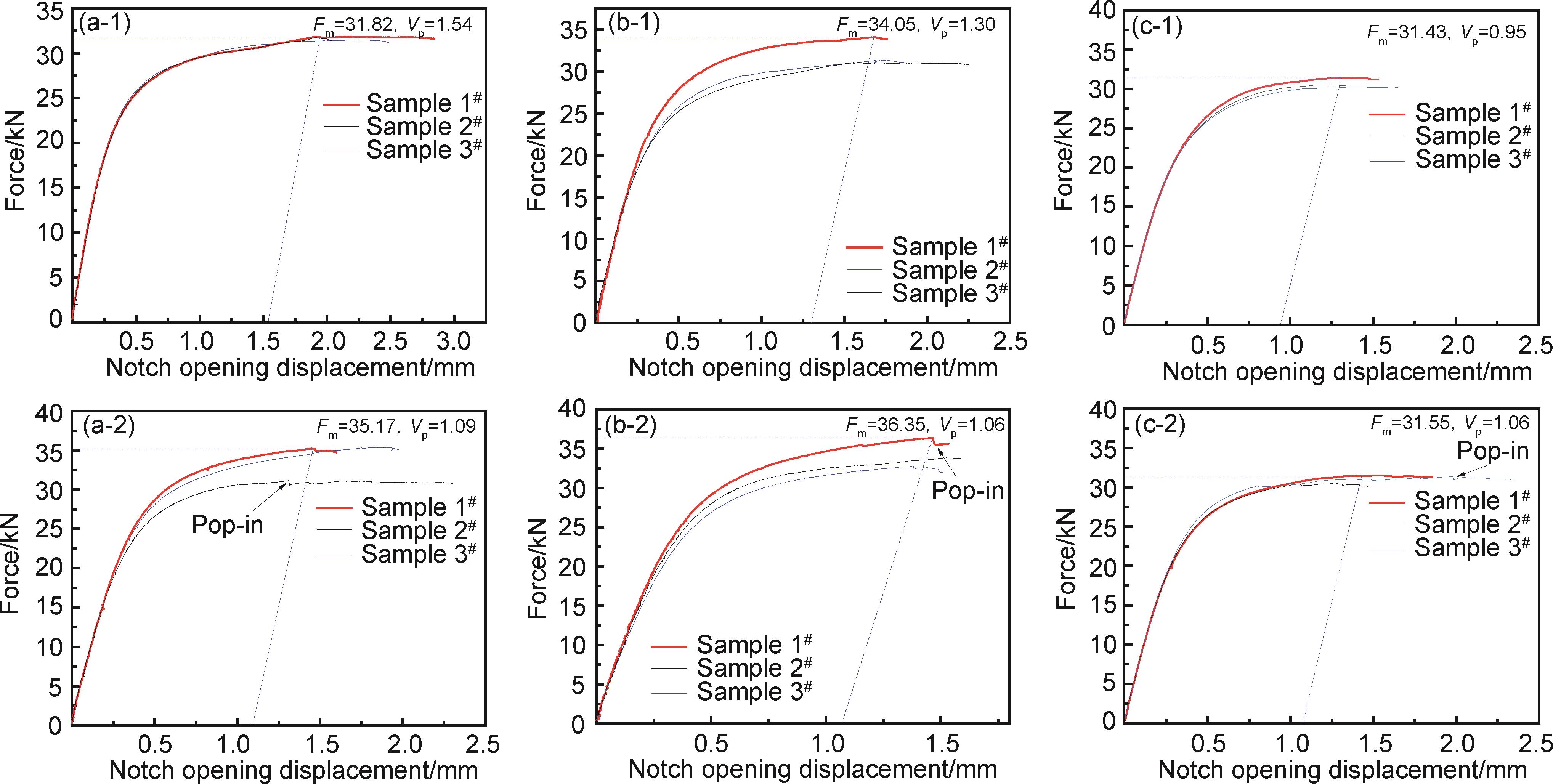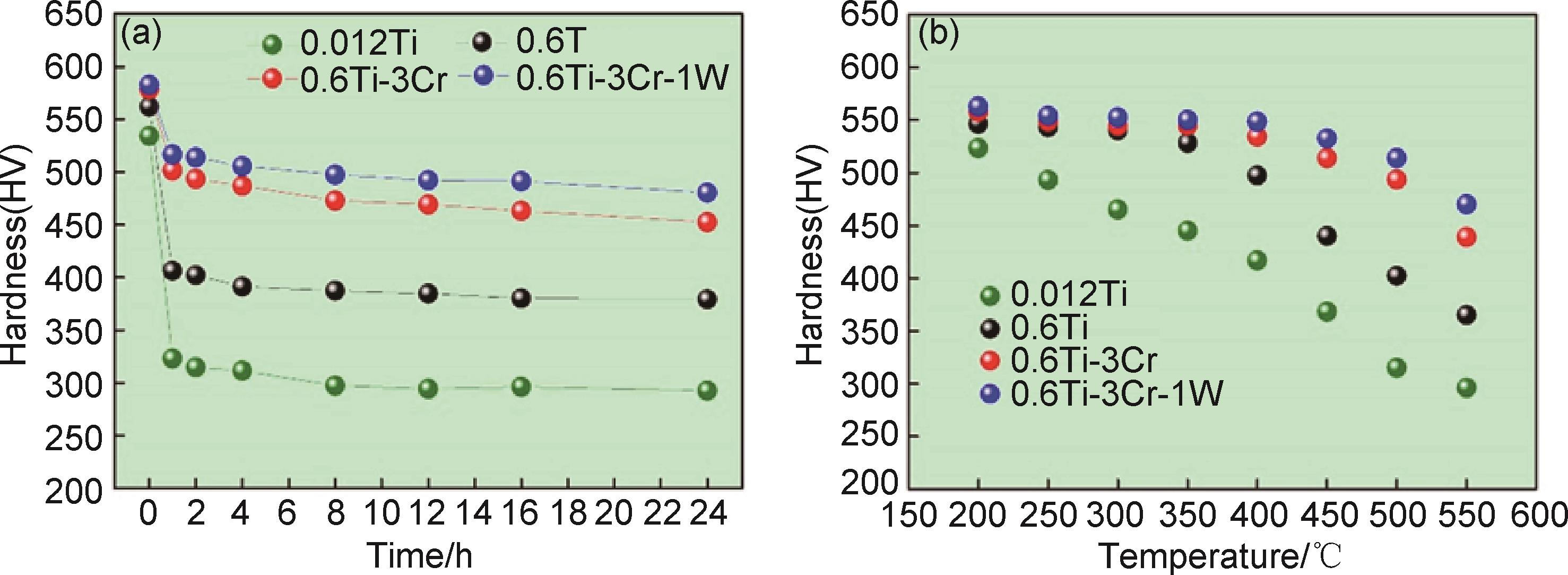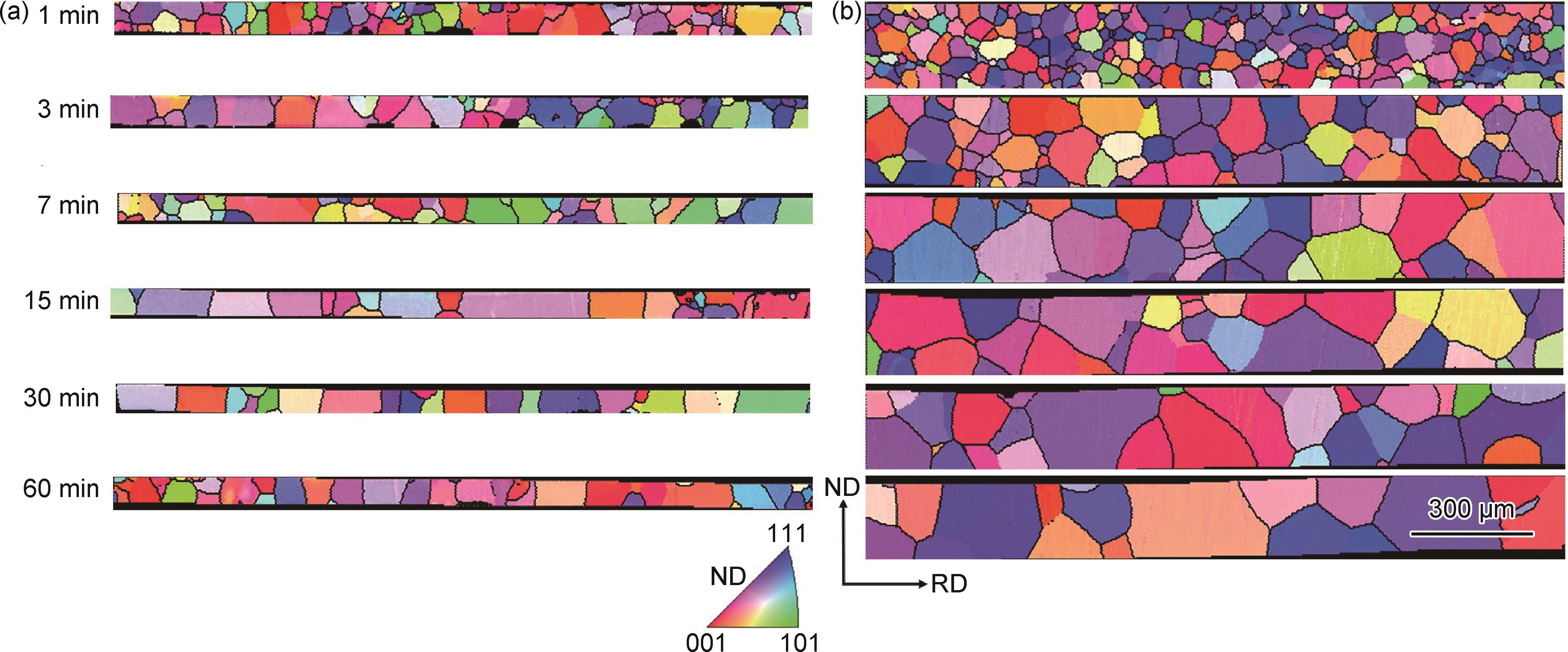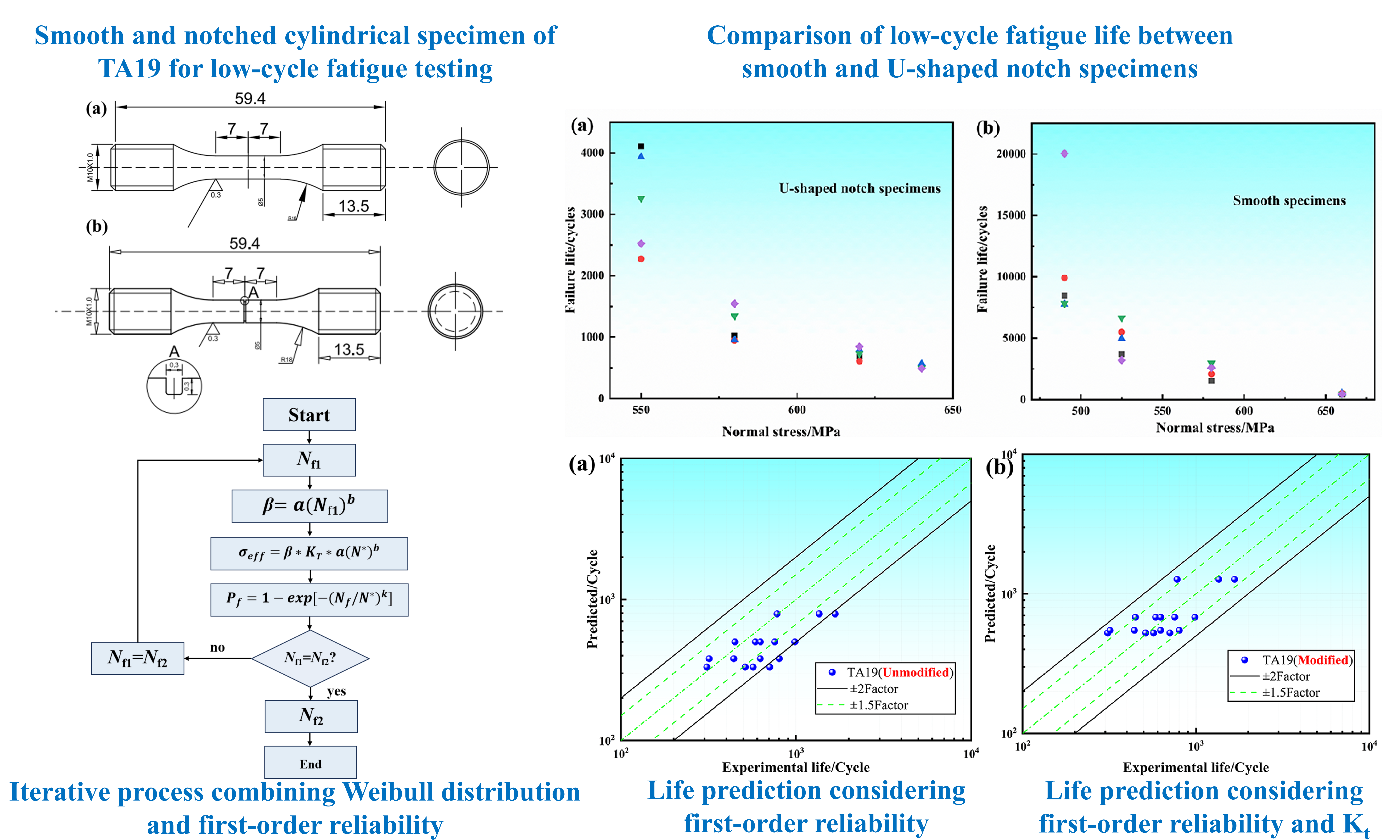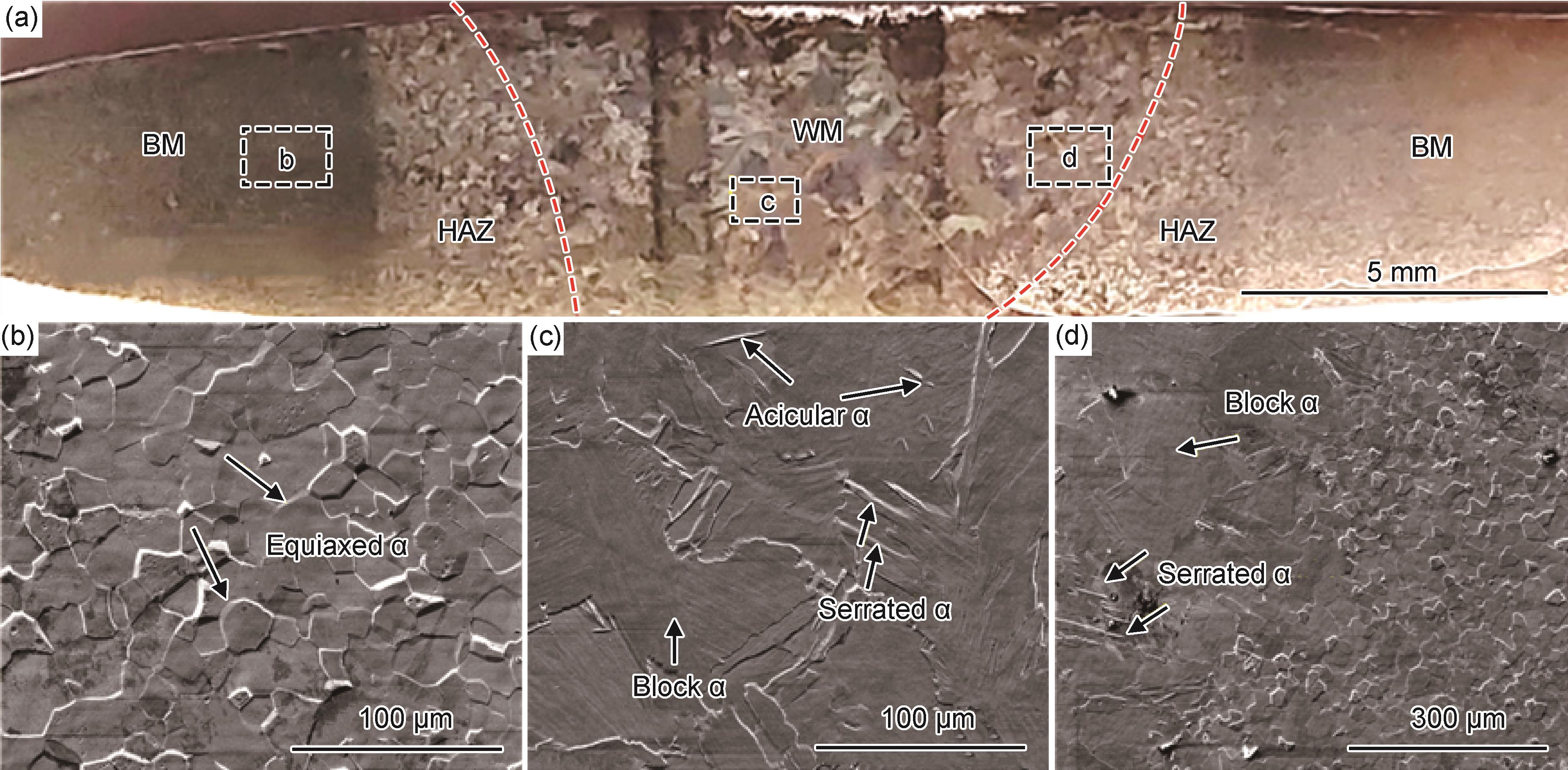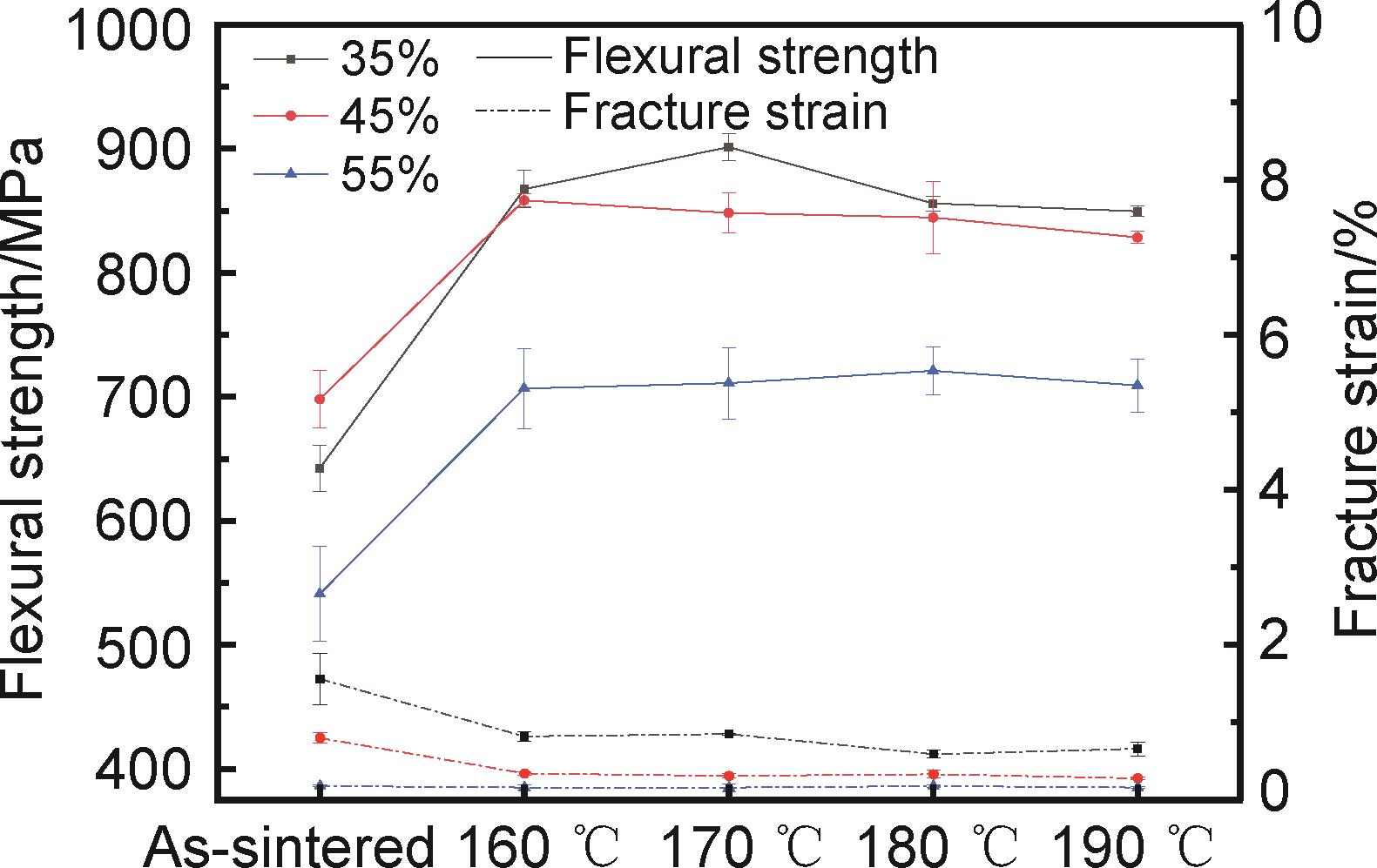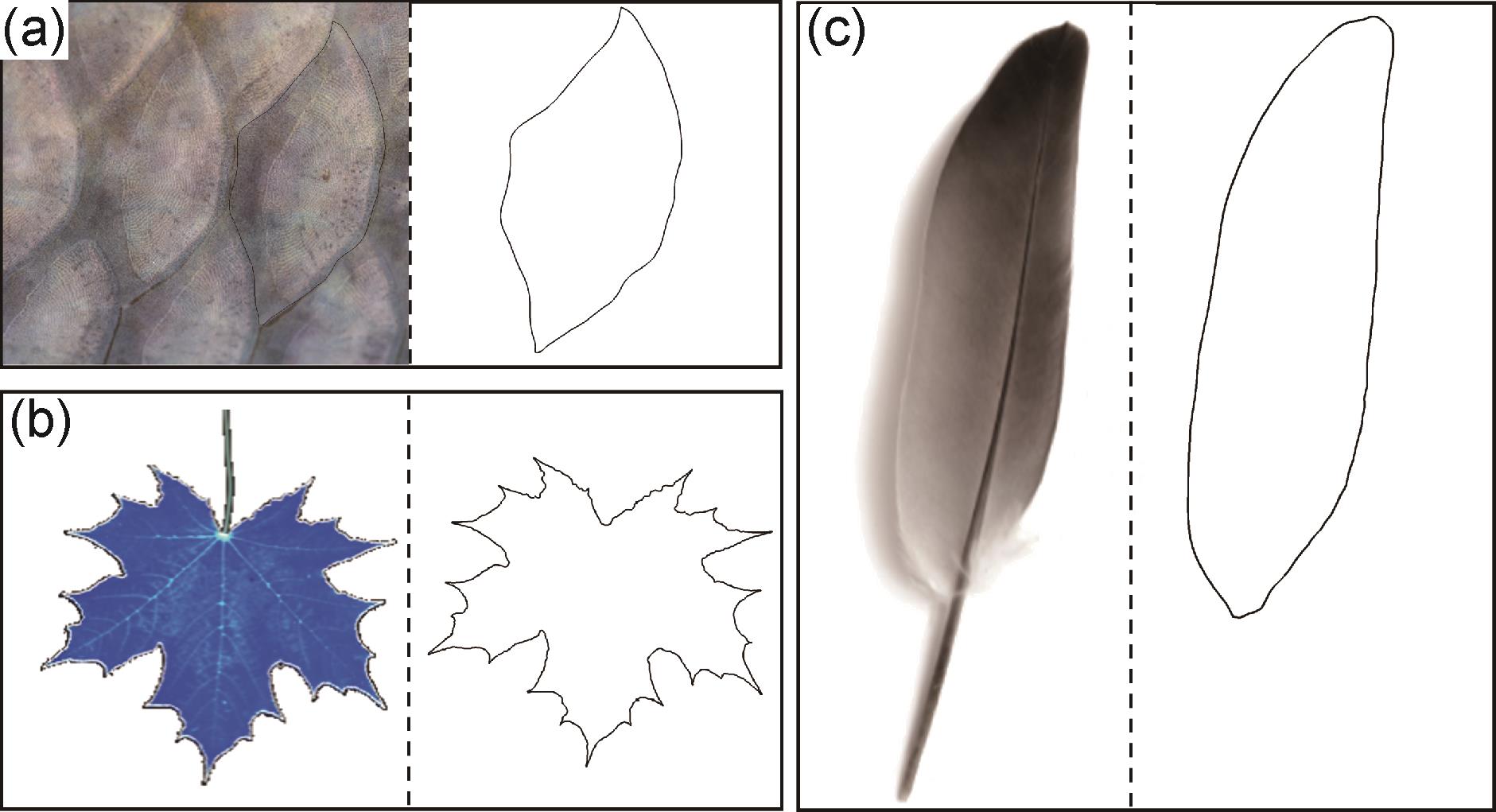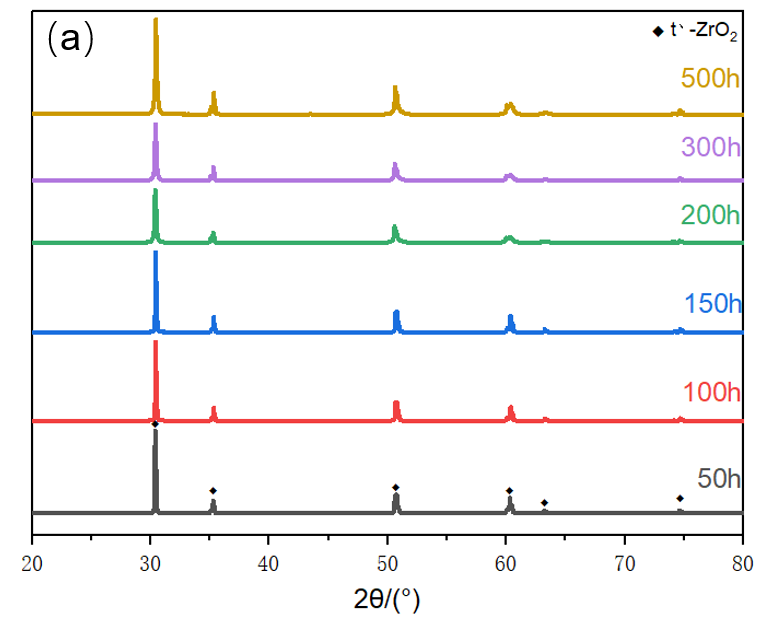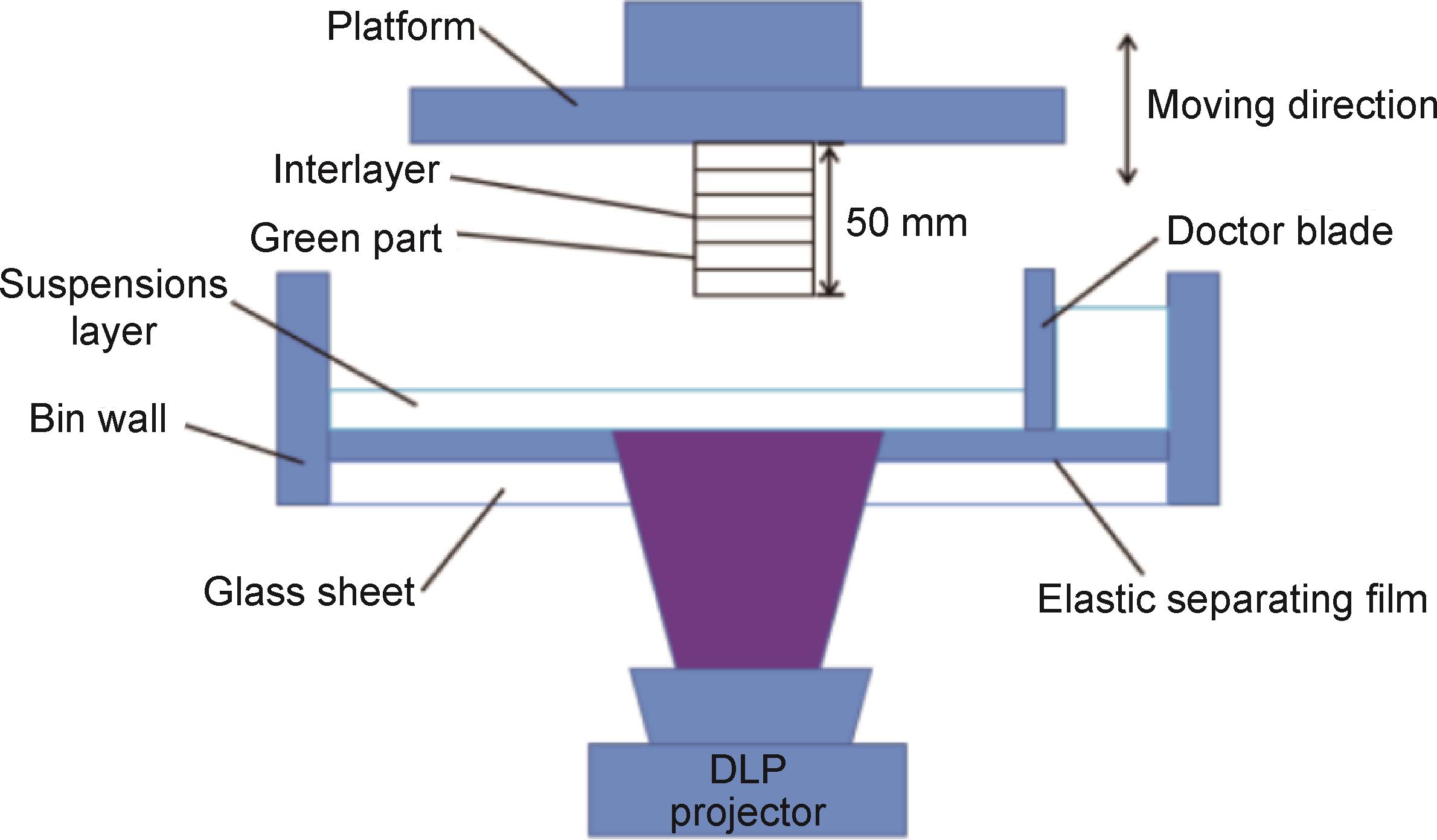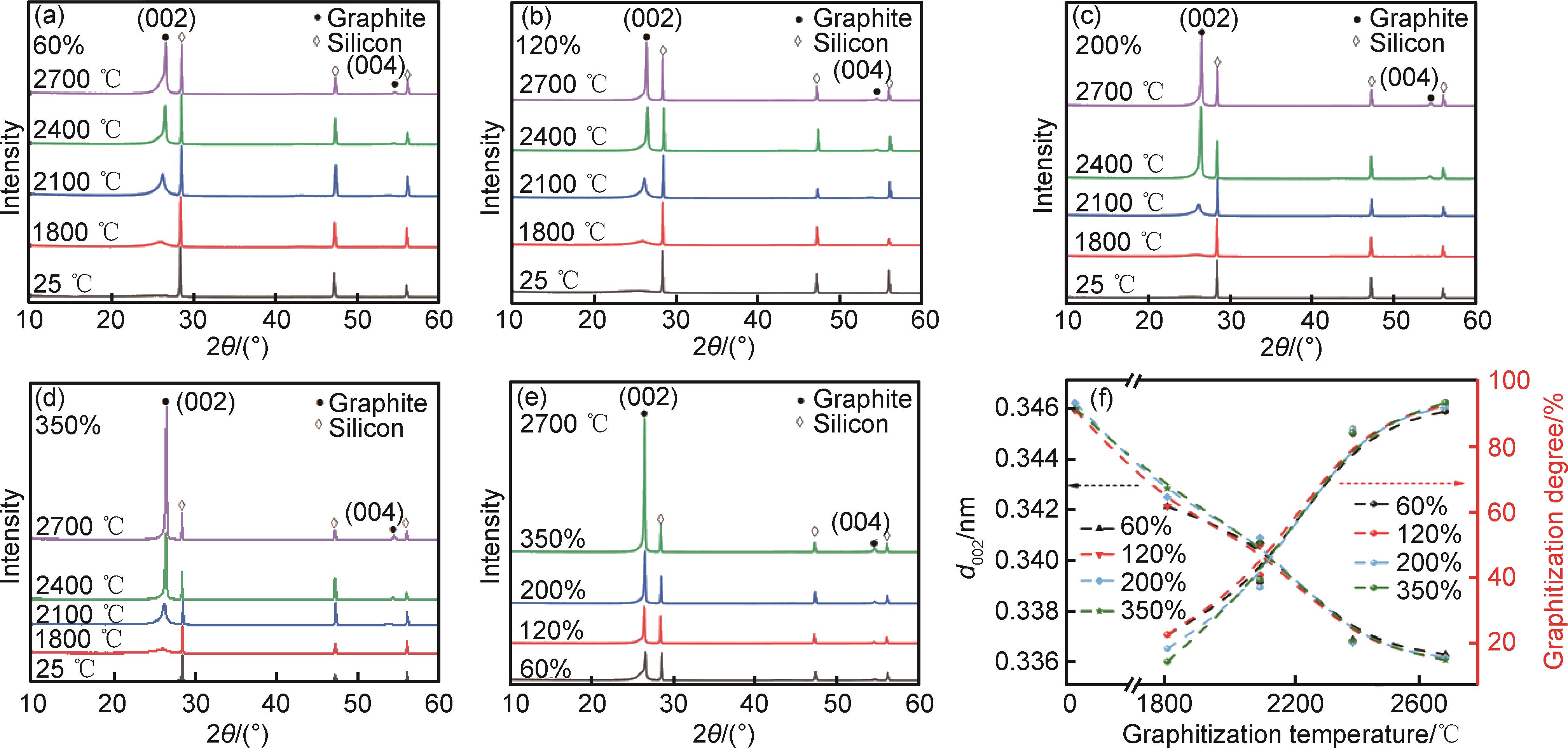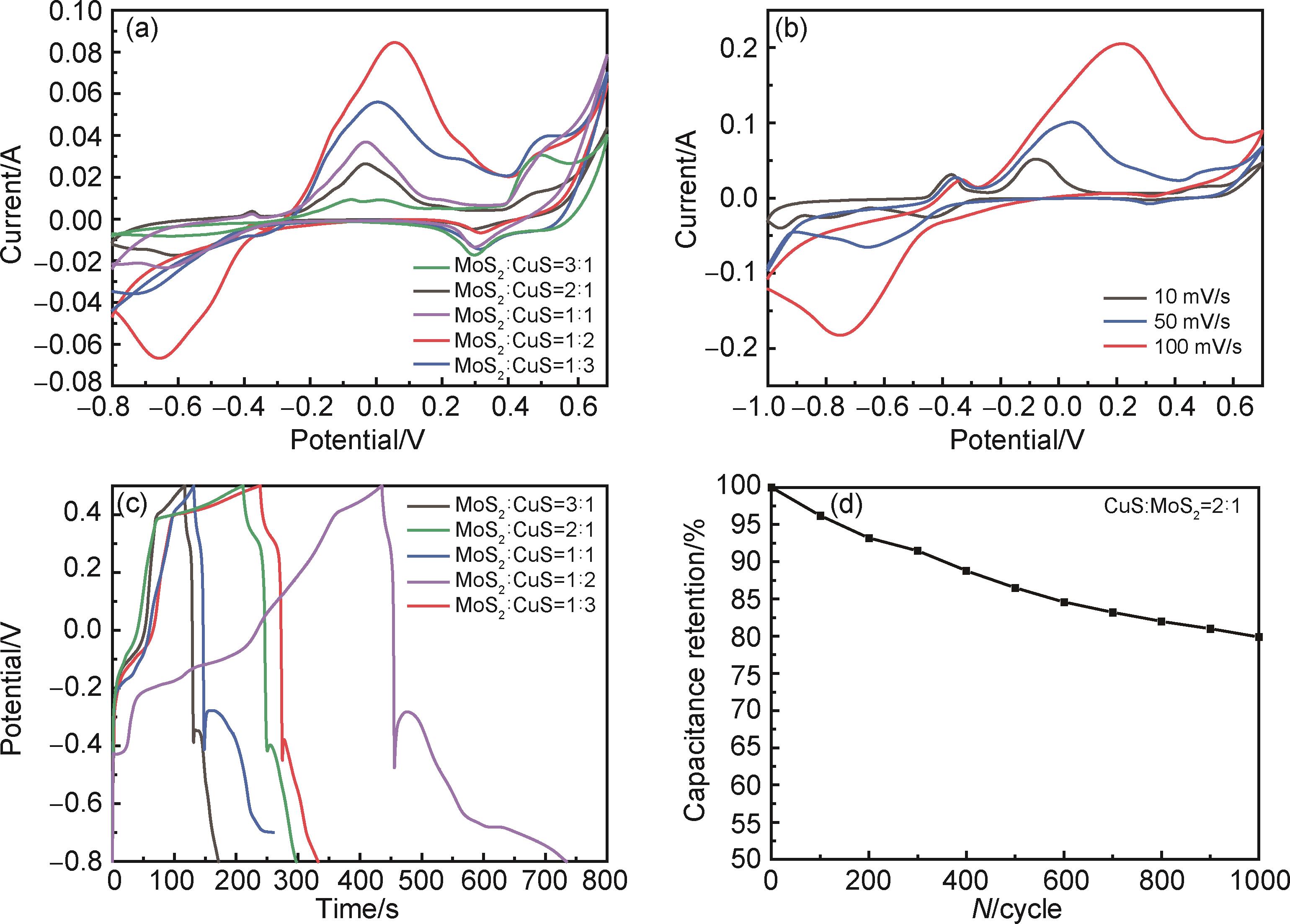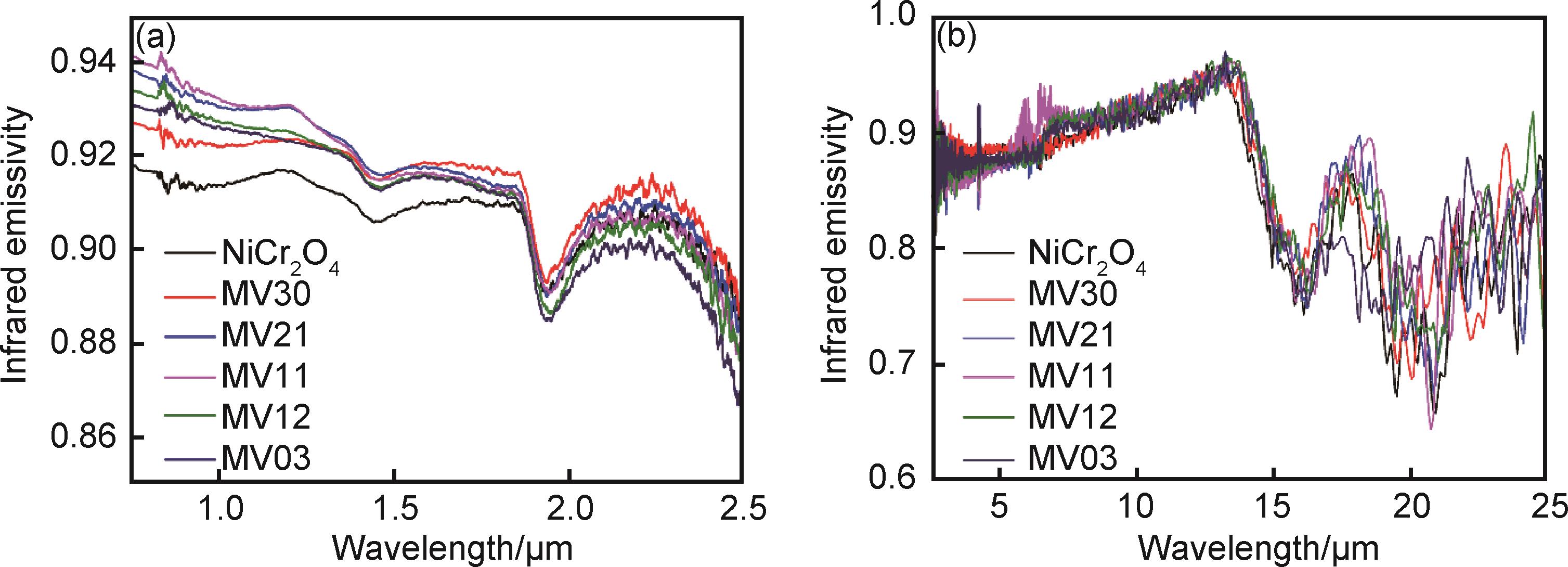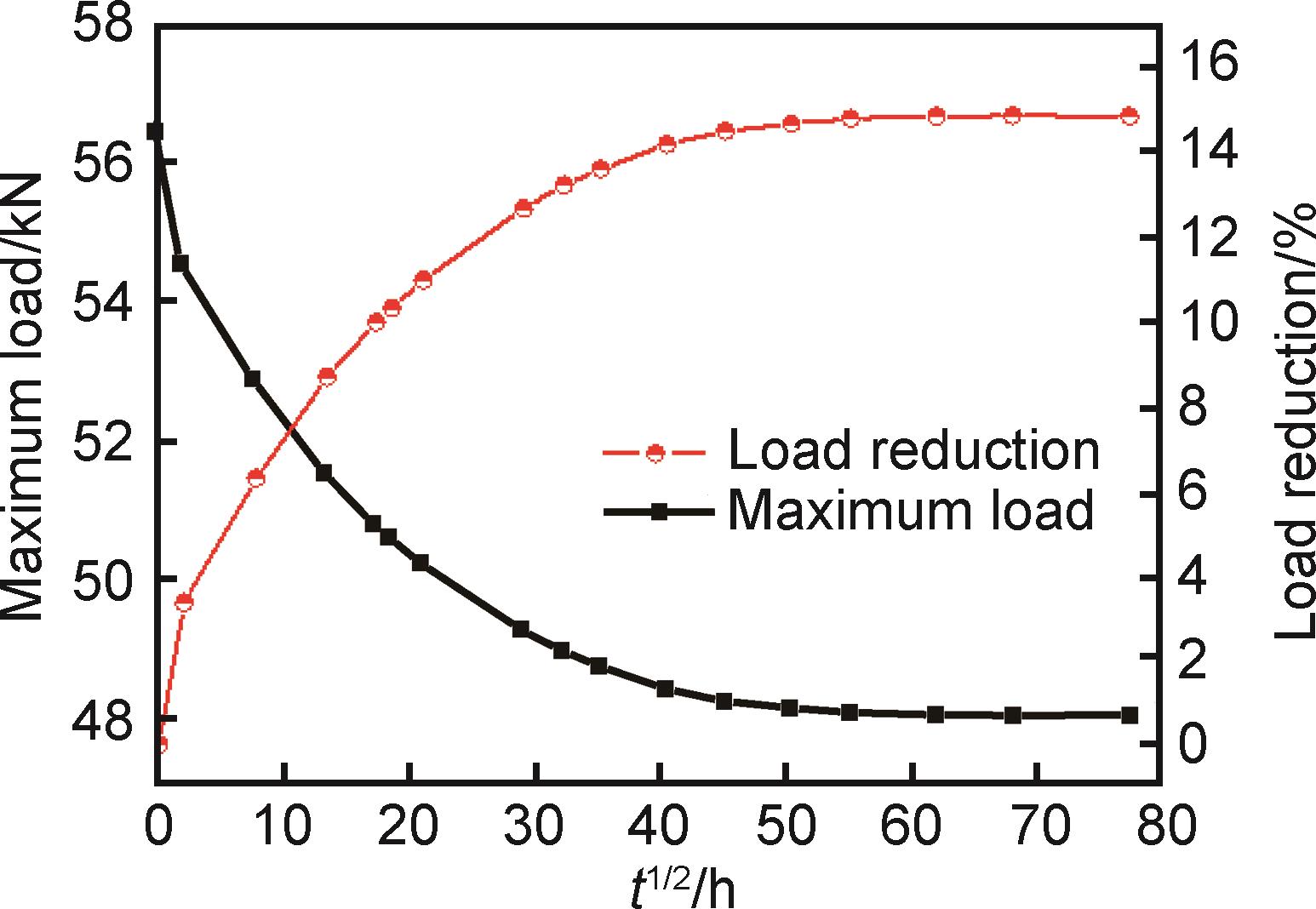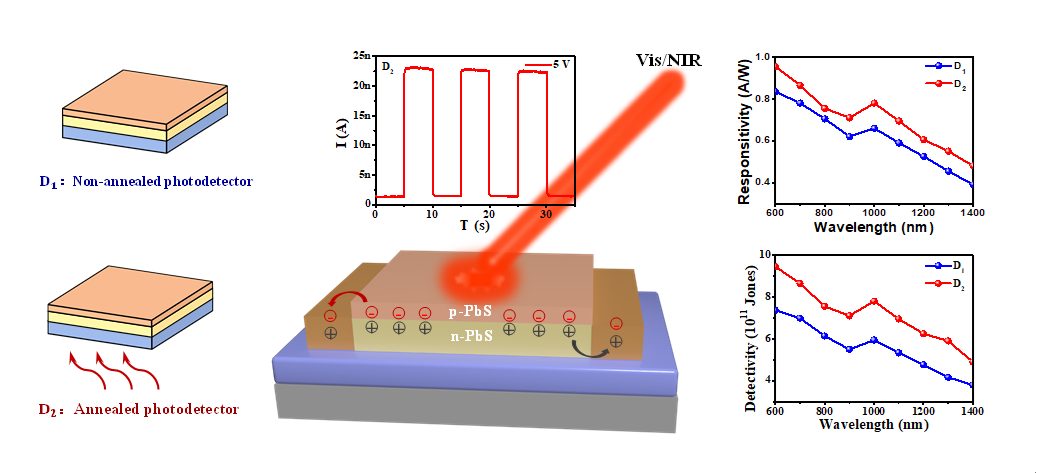Published: 20 November 2025
-
Select all|
-
Research status of ultrasonic continuous welding of carbon fiber reinforced thermoplastic composites2025, 53(11): 1-10. https://doi.org/10.11868/j.issn.1001-4381.2024.000449
Carbon fiber reinforced thermoplastic composites(CFRTP) have superior comprehensive mechanical property,as well as rapid prototyping,weldability and recyclability.The application of CFRTP are gradually increasing in aerospace,vehicle manufacturing and other fields.Ultrasonic welding is recognized as one of the most suitable methods for CFRTP.With the increase of the application of CFRTP in aerospace main load-bearing structures,the discrete solder joints in the form of traditional ultrasonic spot welding are difficult to meet the requirement of the strength of them.Accordingly,foreign scholars have proposed ultrasonic continuous welding technology to realize the seam welding connection of CFRTP structures,which has not been reported in domestic literature.In this paper,the research results of CFRTP ultrasonic continuous welding are reviewed from four aspects:CFRTP ultrasonic continuous welding equipment,joint design,process characteristics and quality inspection.The scientific problems and technical bottlenecks to be solved in CFRTP ultrasonic continuous welding are discussed,so as to provide a reference for the development of CFRTP ultrasonic continuous welding technology of our country.
-
2025, 53(11): 11-29. https://doi.org/10.11868/j.issn.1001-4381.2023.000759
Key components of high-end equipment are often exposed to harsh wear, corrosion or high-temperature environments, thus requiring higher wear resistance, corrosion resistance and high-temperature resistance. As one of the most promising surface engineering technologies at present, thermal spraying technology can be widely applied to many key components of high-end equipment to achieve the purpose of improving their surface performance. Nano thermal spraying technology is an important means to effectively combine nanomaterials and thermal spraying technology to achieve material surface modification. It is also an effective solution to extend the service life of aircraft, ships, and other high-end defense equipment in extreme environments. Nanostructured powder re-granulation technologies enable precise control over the phase composition and microstructure of thermal spray feedstocks at the nano-micro scale. This facilitates the fabrication of nanostructured coatings with tailored properties to meet diverse surface performance requirements for critical components in advanced equipment. This paper briefly summarizes the development status of nanostructured coatings with different functional orientations prepared by thermal spraying at home and abroad in the recent decade, mainly including nanostructured wear-resistant and corrosion-resistant ceramic coatings, nanostructured thermal barrier coatings, nanomodified MCrAlX alloy coatings, nanomodified WC-Co based cermet coatings and nanostructured environmental barrier coatings, etc. The results show that nanostructured and nanomodified thermal spray coatings have a very good potential to be applied on key components of high-end equipments, which can be used to meet the various surface properties required by key component of high-end equipment. key components of high-end equipment have very broad application prospects. To realize the wide application of nanostructured coatings, further research work needs to be carried out in the future in the areas of practical engineering application research, marine environmental service, marine biofouling, advanced powder preparation technology research, and high-performance powder industrialization.
-
2025, 53(11): 30-48. https://doi.org/10.11868/j.issn.1001-4381.2025.000126
Spectral computed tomography (spectral CT) is an emerging detection technology that acquires more comprehensive tissue composition information by measuring an object’s absorption of X-rays of different energies. It plays a pivotal role in various fields such as medical diagnosis, non-destructive testing, material analysis, and security monitoring. Material decomposition algorithms are the core of spectral CT technology, aiming to decompose the composition information of different tissues from multi-energy data. These algorithms are crucial for enhancing the quality and accuracy of decomposed images. This paper reviews the data acquisition methods and mathematical models for material decomposition in spectral CT. It focuses on discussing the research progress of spectral CT material decomposition algorithms in four aspects: projection domain, image domain, direct iteration, and deep learning-based methods. It conducts an in-depth comparative analysis of the theoretical advantages, technical limitations, and current application status of various algorithms. The paper points out that the future research trends in this field include hybrid decomposition optimization in the projection domain, fusion prior constraints and multi-model data in the image domain, convergence stability improvements in direct iteration, and transferability and high generalization in deep learning.
-
2025, 53(11): 49-62. https://doi.org/10.11868/j.issn.1001-4381.2024.000416
The Fe-Ga alloy, a novel magnetostrictive material, distinguishes itself with a low driving magnetic field and remarkable magnetostrictive performance. As an alloy, it has garnered significant attention from researchers in solid-state physics and materials science due to its cost-effectiveness, superior mechanical properties, and high stability. These advantages make it particularly appealing for applications in micro-displacement devices, vibrators, and sensor technologies. The magnetostrictive characteristics of Fe-Ga alloys are influenced by various factors, including material texture orientation, magnetic domain distribution, alloying element additions, and, most importantly, the alloy’s phase structure. This paper provides an in-depth exploration of the phase structure of Fe-Ga alloy and comprehensively summarizes the impacts of various preparation methods on enhancing the preferred grain orientation 〈100〉. It further examines the effects of specific external magnetic fields and prestresses on altering the distribution of magnetic domains, as well as the influence of incorporating rare earth elements on improving magnetostrictive performance. Additionally, the article introduces recent research advancements regarding the influence of heat treatment on phase structure transformation and nanoprecipitate phase precipitation on the magnetostrictive properties of Fe-Ga alloys,contributing to advancing the understanding, promotion, and application of Fe-Ga alloy in the field of structure-function integrated precision device manufacturing.
-
2025, 53(11): 63-71. https://doi.org/10.11868/j.issn.1001-4381.2024.000346
Microstructures and mechanical properties of GH4169 alloy cylinder and its weld joints in a supercritical water reactor are studied after operating 2000 h. The results show that the GH4169 alloy cylinder exhibits good corrosion resistance under conditions of high temperature, high pressure, and sucrose mixed solution; the thickness loss rate of the cylinder is 0.005-0.255 μm/h; the corrosion products primarily consist of oxides and phosphates. However, the welded joints connecting the cylinder and other components represent a vulnerable point that significantly impacts the remaining lifespan of the reactor. The calculated crack propagation rate of the GH4169 alloy cylinder is 5.25 μm/h, indicating that it would only take 762 h for the crack to penetrate through the wall of the connector. Additionally, severe fracture occurs (the circumferential length of the crack is approximately 1/4 of the circumference) at the weld joint between cylinder and stainless-steel, resulting from the synergistic effects of galvanic corrosion, crevice corrosion, and concentrated stress. Despite these challenges, the strength loss of the cylinder is relatively small, which means that the cylinder maintains satisfactory mechanical properties.
-
2025, 53(11): 72-79. https://doi.org/10.11868/j.issn.1001-4381.2023.000310
To address the evolving demands for the clean and efficient utilization of coal, efforts have been devoted to the research and development of C700R-1 nickel-based alloy rotor forgings for advanced ultra-supercritical steam turbine rotors. Concurrently, tests are conducted on the conventional mechanical properties and creep rupture properties of the trial-manufactured rotor forgings. The results show that the use of the closed upsetting+extrusion method enables the high-homogeneity forging of Φ850 mm forgings. The as-forged grain size of the developed large-section forgings ranges from grade 4 to grade 7, and the grain size after heat treatment is approximately grade 3. Due to the rapid cooling rate of the edge parts after solid solution, a large number of uniform and fine γ' phases precipitate in the subsequent aging process. Therefore, the tensile properties of edge position are slightly better than those of the heart and 1/2R position. The variation of tensile properties in different directions of edge position is small. The room temperature tensile strength can reach 950 MPa, the yield strength can reach 600 MPa, and the V-notch absorbed energy at room temperature is beyond 70 J at different positions after heat treatment. The tensile strength can reach 750 MPa, yield strength can reach 500 MPa at 700 ℃. The plasticity is higher than 25% at room temperature and 700 ℃. The creep life exceeds 7000 h in the condition of 700 ℃/300 MPa. Through the deformation mode of closed upsetting+extrusion and reasonable heat treatment process, the homogenization manufacturing of nickel base alloy forgings with a section grade of Φ850 mm, which provides key data for the subsequent manufacturing of full-size nickel base alloy rotor forgings.
-
2025, 53(11): 80-89. https://doi.org/10.11868/j.issn.1001-4381.2023.000169
Welding of cryogenic 9Ni steel is performed using NiCrMo alloy systems with different Nb and C contents. The microstructure and mechanical properties of the welded joints are investigated, and the fracture toughness of the joints under ultra-cryogenic conditions is analyzed by crack tip opening displacement (CTOD) tests. The results show that the welded joint exhibits distinct zoning characteristics. The nickel-based weld metal primarily consists of an austenitic columnar crystal matrix and secondary phases. The secondary phases include fine nanoscale banded precipitates and Nb-rich solidification phases formed in the final stage of weld pool solidification. The precipitates are mainly composed of metal carbides (MC) and Laves phases. With the increase of Nb and C content, the number and average particle size of secondary phases in the nickel-based alloy increase, leading to an improved tensile strength of the joint, but reduced cryogenic impact toughness and fracture toughness. The load-notch opening displacement (F-V) curves show that the characteristic load F m of the joint first increases and then decreases with the addition of Nb and C, while the corresponding characteristic plastic displacement value V p decreases monotonically with the increase of secondary phases. The fracture surface of the CTOD specimens shows the same zoning characteristics. As the Nb and C content increases, the width of the stable crack propagation region on the fracture surface gradually decreases, indicating a deterioration in the fracture toughness of the weld.
-
2025, 53(11): 90-100. https://doi.org/10.11868/j.issn.1001-4381.2024.000079
The desirable combination of ultra-high strength and good toughness enables the secondary hardening ultra-high strength steel widely used in aerospace and energy equipment. The influence mechanism of quenching temperatures on the microstructure and mechanical properties of Co-conserving 2.2 GPa ultra-high strength steel is investigated by using scanning electron microscope(SEM),transmission electron microscope(TEM),tensile and impact testing machine. The results show that when the quenching temperature is 950 ℃, there are many undissolved M 6C carbides and unrefined grains in the matrix, resulting in lower strength (tensile strength:2072 MPa, yield strength:1873 MPa). As the quenching temperature increases, recrystallization promotes the refinement of the matrix grains, and the number of M 6C carbides gradually decreases; such partial dissolution favors the precipitation of hardening phases, resulting in a recovery of strength; when the quenching temperature is 1030 ℃, the experimental steel has excellent combination of strength-plasticity-toughness: the tensile strength is 2251 MPa, the yield strength is 1901 MPa, the elongation is 9%,and the V-notch impact absorbed energy is 9 J. By further increasing the quenching temperature, the rapid growth of austenite grains leads to severe plasticity attenuation, with elongation of only 4.5% at 1120 ℃. Between 1030-1090 ℃, there is a competitive relationship between the dissolution of M 6C carbides and grain growth. Although higher temperature quenching promotes dissolution, the severe coarsening of grains offsets the former’s beneficial effect on toughness to enable a stable performance of strength and toughness.
-
2025, 53(11): 101-112. https://doi.org/10.11868/j.issn.1001-4381.2023.000833
To develop high-temperature wear resistant steel with high tempering stability that can be used in high temperature environments, the bond energy between different alloying elements and C element is calculated by solid and molecular empirical electron theory, and a series of TiC particle-reinforced high-temperature wear-resistant steel components are designed. The precipitation temperature of TiC particles is calculated by Thermo-Calc software and the tempering stability of the steel plate after the best heat treatment is tested at different temperatures and time. The results show that the bond energy formed by Cr, Mo, and W with C is significantly higher than that of Fe—C. Therefore, the activation energy of C atom diffusion in martensite increases, which hinders the diffusion of C atom in martensite and improves the tempering resistance of martensite. Therefore, Cr, Mo, and W are determined as the main addition elements to improve the thermal stability of TiC-reinforced martensitic wear-resistant steel. TiC particles precipitate in the temperature range of 1400-1500 ℃, and the particle morphology shows that the particles distribute like grain boundaries. After thermomechanical processing, micron TiC particles can uniformly distribute on the matrix. The experimental results of tempering stability show that the addition of Cr and W elements greatly improves the tempering stability.
-
2025, 53(11): 113-124. https://doi.org/10.11868/j.issn.1001-4381.2023.000802
The thinning is a trend in the development of high-end electrical steel. Although its iron loss can be further reduced, the larger cold rolling reduction and the surface effect can influence the microstructure and texture of the final product, thereby affecting the magnetic properties. The two-stage cold rolling method can optimize the texture and increase the proportion of {100} and Goss textures. The influence of processing parameters on the microstructure, texture, and magnetic properties of a 0.10 mm thick ultra-thin non-oriented electrical steel is investigated by the two-stage cold rolling method, with a focus on the role of surface effects during prolonged holding. The results show that cube and Goss textures coexist in the final sheets produced by the two-stage cold rolling method. Furthermore, when the combined reduction from the two stages falls within the range of approximately 75% to 81%, the resulting texture and magnetic properties are superior to those of samples with reduction combinations of 90%/50% and 50%/90%. Within the temperature range of 840-920 ℃, the influence of time on grain growth is greater than that of temperature, and grain growth is affected by the surface effect in all cases. During isothermal annealing at 920 ℃, the 0.1 mm thick sample exhibits a more significant surface effect compared to the 0.27 mm thick sample, meaning grain growth is significantly hindered; the average grain size after the annealing for 60 min could not exceed the sheet thickness of 100 μm. In contrast, the average grain size of the 0.27 mm thick sheet grows to 175 μm.
-
2025, 53(11): 125-133. https://doi.org/10.11868/j.issn.1001-4381.2025.000014
With the improvement in aeroengine performance,critical components (such as centrifugal impellers) operate under high-temperature,high-stress,and complex load conditions. Geometric discontinuities (such as ventilation holes and fillet radii) have become weak points for fatigue failure. This study focused on TA19 material,preparing smooth and U-shaped notch specimens for low-cycle fatigue tests under high-temperature conditions. Fatigue life data have fitted using the Weibull distribution,and an improved iterative fatigue life model is proposed to address the limitations of traditional models in regions with stress concentration. The model incorporates the stress concentration factor (K t) and first-order reliability theory for correction. The results indicate that due to stress concentration effects,U-shaped notch specimens exhibit more concentrated fatigue life distributions,whereas smooth specimens show greater variability. The Kolmogorov-Smirnov test verifies that the data conforms to the Weibull distribution characteristics. The revised model significantly improves the prediction accuracy,with most of the predicted data falling within±1.5 times the scatter band. Additionally,P-S-N curves for different failure probabilities are constructed,providing a valuable reference for the reliable fatigue life prediction of complex structures.
-
2025, 53(11): 134-142. https://doi.org/10.11868/j.issn.1001-4381.2023.000301
In the aerospace field, welding serves as the primary joining process for TA3 alloy components,and the microstructure and mechanical properties of its welded joints have a significant impact on the service safety of welded components. This study compares the tensile properties of the base metal and welded specimens and studies the deformation morphology before and after tension using scanning electron microscopy combined with electron backscatter diffraction. The results show that the microstructure of TA3 alloy is equiaxed α grains before welding, and massive, acicular and serrated α grains appear after welding. The yield strength (378 MPa) and tensile strength (458 MPa) of welded specimens are higher than that of base material specimens, but the elongation is lower. The reason is that after the base meterial sample is welded, the welding temperature has the effect of aging treatment on the sample. There exists aging hardening, and the grain size inside the weld area becomes smaller, which will increase the tensile strength. Because the microhardness of the weld zone is obviously higher than that of the base metal zone, the fracture of the welded joint is located in the base meterial zone. The deformation mechanism of the weld zone is stress-induced deformation twin ( 2)[ 3] and ( 12)[ 13], with a Schmid factor of 0.038, exhibiting high shear stress and strong coordination of grain deformation. Deformation twins ( 2)[ 3] also appear in the base material region, but the Schmid factor is 0.078, indicating a relatively high degree of stress concentration.
-
2025, 53(11): 143-152. https://doi.org/10.11868/j.issn.1001-4381.2024.000465
The β titanium alloy Ti-1300 is fabricated utilizing laser engineered net shaping (LENS) technology. This study systematically examine the microstructural evolution of the alloy along the deposition direction during the LENS process, and elucidate the intrinsic relationship between its mechanical properties and microstructure. The results indicate that the thermal cycling of each deposited layer in the LENS process has a profound impact on the microstructural evolution. Initially, columnar crystals are formed with a thickness of (15.6±1.2) mm, comprising approximately 20% of the total deposited thickness. Subsequently, these grains transform into equiaxed grains. Within the as-deposited grains, the microstructure undergo a transition from a basket-weave structure to a lamellar structure, and the discontinuous grain boundary α phase changes to a continuous grain boundary α phase along the deposition direction. Notably, the basket-weave microstructure imparts exceptional strength to the alloy. However, the continuous grain boundary α phase tends to promote intergranular fracture, resulting in reduced ductility.
-
2025, 53(11): 153-163. https://doi.org/10.11868/j.issn.1001-4381.2024.000407
With the widespread application of carbon fiber reinforced polymer (CFRP) in the aerospace field, studying the friction performance at the interface of CFRP and aluminum alloy connections has become increasingly important. This study experimentally investigates the influence of surface microtexture parameters on the friction performance at the aluminum alloy-CFRP interface. The results indicate that both contact pressure and microgroove geometric parameters significantly affect the interface friction performance. As the contact pressure increases from 7.5 MPa to 30 MPa, the sliding friction coefficient significantly decreases, primarily due to the formation and enhancement of a self-lubricating film. Under high contact pressure, the microstructures on the aluminum alloy surface embed into the CFRP plate, creating a plowing effect. The micro-cutting action generates epoxy resin debris that fills the microstructure grooves, forming a stable lubricating film. The groove depth has the most significant impact on friction performance, with a groove depth of 31.8 μm significantly reducing the sliding friction coefficient to 0.197. The synergistic effect of contact pressure and microtexture geometric parameters markedly improves the interface friction performance and connection strength. This study provides theoretical basis and practical guidance for optimizing composite material connection technology.
-
2025, 53(11): 164-173. https://doi.org/10.11868/j.issn.1001-4381.2023.000127
Silicon carbide and 2024 aluminum alloy powders with average particle sizes of 14 μm and 15 μm are selected as the reinforcement phase and matrix alloy, respectively. SiCp/2024Al composites with volume fractions of 35%, 45%, and 55% are fabricated by hot isostatic pressing. The influence of aging treatment on the mechanical properties of the composites is investigated. The results show that aging treatment significantly enhances the hardness of the composites. Increasing the aging temperature and the volume fraction of SiC both shorten the peak aging time of the composites. When the aging temperature is increased from 160 ℃ to 190 ℃, the peak aging time of the composite with a 35% volume fraction is reduced from 9.5 h to 2 h. At 190 ℃, the peak aging time of all three volume fraction composites is shortened to 2 h. The precipitation strengthening of the matrix alloy during the heat treatment process results in higher flexural strength in the aged composites compared to the as-sintered composites with the same volume fraction. The higher the matrix alloy content, the more significant the strengthening effect. Among them, the peak-aged composite with a 35% volume fraction exhibits the highest flexural strength, reaching 901 MPa at 170 ℃. With the increase of volume fraction, the matrix alloy content decreases, reducing the ability of the material to alleviate local stress concentration through plastic deformation. Moreover, defects in the composites gradually increase. Therefore, both the as-sintered and heat-treated composites with a 55% volume fraction exhibit lower flexural strength. However, the micro-yield strength of the aged composites is higher than that of the as-sintered composites. The aged composite with a 45% volume fraction generally has the highest micro-yield strength, fluctuating in the range of 361-380 MPa, while the aged composite with a 55% volume fraction has the lowest micro-yield strength. The micro-yield strength of the composite with a 35% volume fraction initially increases and then decreases with increasing temperature, reaching its highest value (368 MPa) at 180 ℃, slightly higher than that of the composite with a 45% volume fraction under the same conditions.
-
2025, 53(11): 174-181. https://doi.org/10.11868/j.issn.1001-4381.2023.000360
Based on the current status and requirements of wear in zirconia ceramics, in response to the problem friction reduction performance of single-textured specimens, different texture types are combined to extract biomimetic contours from biological surfaces and design various novel composite biomimetic textures. The numerical simulation and the experimental investigation methods are used to analyze the friction reduction performance of composite biomimetic textures,solving the Reynolds equation numerically, studying the influence of composite texture types on oil film load capacity, pressure distribution area, and maximum static pressure, and conducting experimental exploration of the tribological performance using a friction and wear testing machine. The results indicate that composite biomimetic textures exhibit higher oil film load capacity, wider pressure distribution areas, and lower friction coefficients compared to other texture types, among them, the comprehensive anti-friction effect of the scale + feather composite texture is the best; the friction reduction mechanism of composite biomimetic textures can be mainly attributed to changes in contact stress points, the asymmetric distribution of pressure and abrasive storage properties, and the form of pressure distribution of composite texture is highly dependent on a single texture type.
-
2025, 53(11): 182-188. https://doi.org/10.11868/j.issn.1001-4381.2025.000155
8%(mass fraction)Y2O3 partially stabilized zirconia (8YSZ) is a currently commonly-used top-coat material for thermal barrier coatings (TBCs) applied to turbine blades in aero-engines. However, its volume change induced by high-temperature phase transitions above 1200 ℃ can easily lead to cracking and failure of TBCs. Sc2O3 is employed as an alternative stabilizer to fabricate 8%Sc2O3-92%ZrO₂(mole fraction) ceramics (8SSZ) via a solid-state synthesis method. The thermophysical properties of 8SSZ and conventional 8YSZ, including thermal expansion coefficient (CTE), thermal conductivity, and high-temperature phase/grain stability, are systematically compared. The results show that after heat treatment at 1400 ℃ in a muffle furnace, the CTE of 8SSZ measured by a dilatometer ranges from 8.91×10-6 K-1 to 10.7×10-6 K-1, which is comparable to that of 8YSZ. Thermal conductivity tests reveal that 8SSZ exhibits a thermal conductivity of 2.59 W/(m·K), approximately 20% lower than that of 8YSZ. X-ray diffraction (XRD) and scanning electron microscopy (SEM) results demonstrate that 8SSZ maintains phase stability without phase transitions after 500 h at 1400 ℃, outperforming 8YSZ in high-temperature phase stability. However, 8SSZ still exhibits the issue of excessive grain growth.
-
2025, 53(11): 189-196. https://doi.org/10.11868/j.issn.1001-4381.2023.000700
Interlayer crack is a significant obstacle to the wide-scale implementation of light-cured additive manufacturing in industrial applications. The formation mechanism of crack defects during the forming and debinding stages of the process is investigated and their effects on the properties of light-cured ZrO2 ceramics are analyzed. Furthermore, the study compares and analyzes the influence of exposure time and debinding rate on the distribution of cracks in ZrO2 ceramics. The research analyzes and compares the influence of exposure time and debinding rate on the distribution of cracks in ZrO2 ceramics. The results indicate that it is easier to obtain defect-free ceramic green bodies when the slice thickness matches the exposure layer thickness. Moreover, the study observes that the green body exhibits the least number of surface cracks when the debinding rate is set at 0.1 ℃/min. Consequently, the research achieves the successful production of ceramic parts with a density of 99% and a flexural strength of 450 MPa.These findings establish a solid scientific foundation and provide valuable technical guidance for the manufacturing and application of defect-free ZrO2 ceramics using light-cured additive manufacturing.
-
2025, 53(11): 197-203. https://doi.org/10.11868/j.issn.1001-4381.2023.000557
The preparation of carbon paper used phenolic resin as matrix carbon, and different heat treatment temperatures (1400-2700 ℃) are used to obtain matrix carbon with different structures. At the same time, the effect of matrix carbon content and structure on carbon paper for proton exchange membrane fuel cell is studied. The results show that the matrix carbon in carbon paper is more prone to graphitization transformation than carbon fiber. As the content of the matrix carbon increases, the d 002 diffraction peak of the carbon paper becomes sharper. When the heat treatment temperature increases from 2100 ℃ to 2400 ℃, the graphitization of the carbon paper increases by 45.2%, which is the largest increase. With the increase of heat treatment temperature, the carbon papers, with different matrix carbon ratios, show differences in performance trends. When the carbon content of the matrix is 60%(mass fraction, the same below) and 120%, the thickness of the carbon paper gradually decreases with the increase of the graphitization temperature, and the tensile strength of the carbon paper has a slight change; when the carbon content of the matrix is 200% and 350%, with the increase of graphitization temperature, the thickness of carbon paper decreases slightly and then increases, and the tensile strength of carbon paper decreases rapidly. The surface resistivity of carbon paper shows a downward trend with the increase of heat treatment temperature, and its change trend is basically consistent with the change trend of thickness. Therefore, when preparing carbon papers with different properties, it is necessary to consider the synergistic effect of matrix carbon content and structure.
-
2025, 53(11): 204-214. https://doi.org/10.11868/j.issn.1001-4381.2024.000204
This study utilizes mushroom stalks as a biological template and melamine as a precursor for carbon nitride to synthesize g-C3N4/C,via thermal polymerization method. Copper sulfate pentahydrate (CuSO4·5H2O),ammonium molybdate tetrahydrate ((NH4)6Mo7O24·4H2O),and thiourea (CH4N2S) are selected as the sources for Cu,Mo,and S,respectively. A two-step hydrothermal process is employed to prepare CuS/MoS2 composites with different mass ratios. Then CuS/MoS2 is anchored on the surface of g-C3N4/C to obtain CuS/MoS2-g-C3N4/C composite electrode materials. The composite electrode materials are characterized by their phase structure,microstructure,pore structure,and capacitance performance. The results indicate that the CuS/MoS2-g-C3N4/C composite electrode materials exhibit high purity,good crystallinity,good phase contact interface, and abundant porous structure. In electrochemical performance testing,the CuS/MoS2 composite material with a mass ratio of MoS2 to CuS at 1∶2 demonstrates optimal electrochemical performance,achieving a specific capacitance of 230 F·g-1 at a current density of 1 A·g-1. When the mass ratio of CuS/MoS2 to g-C3N4/C is 1∶1,the CuS/MoS2-g-C3N4/C composite material exhibits the best electrochemical performance,with a specific capacitance of 434.7 F·g-1. Moreover,after 1000 cycles,the capacitance retention rate is 89.2%,showing good stability.
-
2025, 53(11): 215-222. https://doi.org/10.11868/j.issn.1001-4381.2023.000311
The MnO2 and VB2 co-doped NiCr2O4 coatings(MV) with different ratios of moles are prepared by atmospheric plasma spraying(APS), and the phase composition, microstructure, infrared emissivity and thermal shock resistance of the coatings are investigated. The results show that the co-doping of NiCr2O4 with MnO2 and VB2 can more effectively improve the infrared emissivity of the coatings than the doping of MnO2 or VB2, thus the coating with MnO2 and VB2 doping ratio of 1∶1 (MV11) has the highest emissivity. In the 0.75-2.5 μm wavelength ranges, the room temperature band emissivity of the MV11 coating is 0.928, and in the 2.5-25 μm, the infrared emissivity of the coating increases from 0.884 at room temperature to 0.918 at 1000 ℃. It is mainly attributed to the transition metal ions and B ions enter the spinel lattice, increasing the concentration of oxygen vacancy in the lattice, introducing partial energy levels into the bandgap, and causing lattice distortions, enhancing free carrier transition absorption and infrared lattice vibration absorption. In addition, after 30 thermal cycles of water cooling at 25-750 ℃, microcracks appear in the coating, but the phase structure did not change significantly, and the emissivity decreases slightly, indicating that the coating has good thermal shock resistance.
-
2025, 53(11): 223-230. https://doi.org/10.11868/j.issn.1001-4381.2023.000177
The mechanical properties of polymer matrix composites often decrease due to hygrothermal environment. The hygrothermal aging tests and the compression tests are carried out before and after aging on the T700/BP9916 composites plate with open-hole, and the open-hole compression(OHC) strength is obtained. The residual stress distribution in the specimen after hygrothermal aging is simulated by ABAQUS software. Based on the hygrothermal expansion behavior and linear relationship between mechanical properties and the moisture absorption, OHC tests before and after hygrothermal aging are simulated. The results show that the moisture absorption of the T700/BP9916 composites have typical Fick diffusion behavior, and the maximum load of the OHC after hygrothermal aging decreases by approximately 5.2%. The internal stress caused by hygrothermal aging is very small and have no impact on the strength. The relative mass increment-time curve of moisture absorption obtained from the FEM simulation is in good agreement with the experimental. The relative error of maximum load of OHC test between the simulated and the experimental value is only 0.88% with non-hygrothermal aging, and the relative error is 6.21% during the hygrothermal environment. The increase in error is due to the fact that only the linear relationship between hygrothermal effect and the linear decline of material properties is considered in the simulation calculation.
-
2025, 53(11): 231-238. https://doi.org/10.11868/j.issn.1001-4381.2024.000215
Lead sulfide quantum dots (PbS QDs) have excellent optoelectronic properties and strong near-infrared light absorption,making them ideal materials for the preparation of near-infrared photodetectors. However,there are still challenges in the process and insufficient performance of the PbS QDs-based optoelectronic detection. In this study,PbS QDs are synthesized by the hot injection method,and the PbS quantum junction infrared detector is prepared by the layer-by-layer method and the solid-state ligand exchange method. The photoelectric performance of the PbS quantum junction infrared detector is improved by the thermal annealing process,and the effect of annealing temperature on the photoelectric performance of the PbS quantum junction is described. The results show that annealing effectively reduces the dark current of the PbS quantum junction infrared detector while increasing the photocurrent,and obtains a stable photoresponse current output. After annealing,the response time of the PbS quantum junction infrared detector is shortened,resulting in a time of 1.9 ms and a delay time of 3.2 ms. The sensitivity of the detector is improved,and the responsivity and detectivity are increased by 1.2 times and 1.3 times,respectively,resulting in a responsivity of 0.78 A·W-1 and a detectivity of . Annealing effectively improves the crystallinity and the carrier mobility of PbS QDs thin films,while reducing the defect states at the film and interface,resulting in a comprehensive improvement in the optoelectronic performance of PbS quantum junction infrared detectors.




